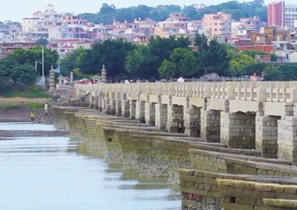
Cultural and Natural Heritages in Fujian•Quanzhou
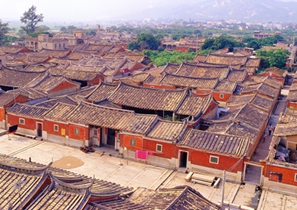
The Ancient House Group of Cai Clan
The Ancient House Group of Cai Clan is located in a flat area in the foothills of a mountain, facing its water source and with a mountain barrier to the rear.
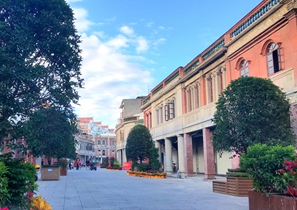
Quanzhou’s Zhongshan Road
Built in the early 1920s, Quanzhou’s Zhongshan Road stretched about 2.5 kilometers across the central district of the ancient city of Quanzhou.
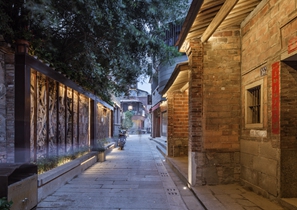
Jinyu Alley
Jinyu Alley is a charming traditional alleyway typical of southern Fujian, bordering the moat of Luocheng to the south and connected to Zhongshan Road, the Ancient School and the Confucius Temple to the east.
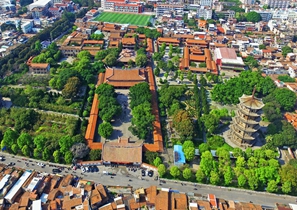
Kaiyuan Temple
Kaiyuan Temple was the largest and highest government-sanctioned Buddhist temple in Song-Yuan Quanzhou.
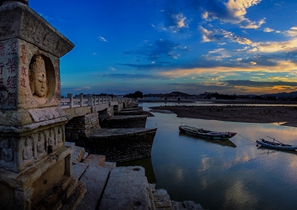
Luoyang Bridge
Luoyang Bridge was a transportation hub connecting Quanzhou to northern Fuzhou and the nation’s vast heartland. Luoyang Bridge, Anping Bridge and Shunji Bridge link up a convenient coastal trunk road.
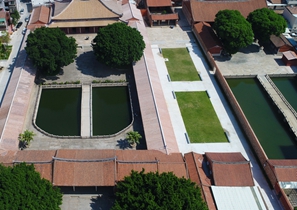
Confucius Temple and School
As a place for Confucians to offer sacrifice and the city’s highest institute of education, the Confucius Temple served as a symbol of Quanzhou’s “high society”.
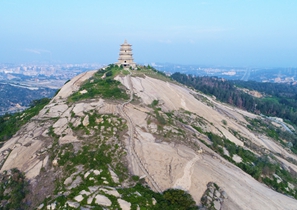
Wanshou Pagoda
Wanshou Pagoda was the landmark for merchant ships arriving at the port of Quanzhou; it also served as a source of spiritual support for the local population by safeguarding the bay and providing divine protection for traveling merchant.

Liusheng Pagoda
Liusheng Pagoda is an important historical site at Shihu Port that marked

Shihu Dock
Shihu Dock is an invaluable piece of physical evidence of Quanzhou’s outer port docks, testifying to the fact that conditions in Quanzhou during the Song and Yuan dynasties were extremely conductive to port construction.
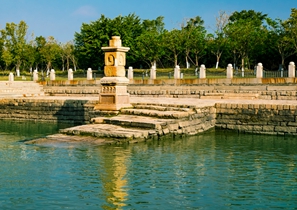
Estuary Docks
Estuary Docks are located in the southeast of the ancient city of Quanzhou on the northern banks of the Jinjiang River.
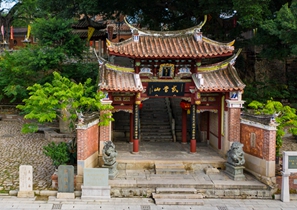
Zhenwu Temple
Founded in the era of the Song and Yuan dynasties and dedicated to the worship of Emperor Zhenwu, this Daoist temple served as an important landmark of the ancient port of Fashi.
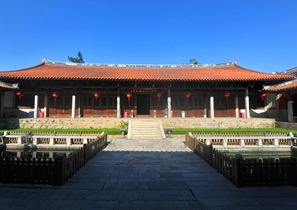
Tianhou Temple
Tianhou Temple is dedicated to the worship of Mazu, the sea goddess of Quanzhou, and is a major center for the dissemination of Mazu belief around the world.
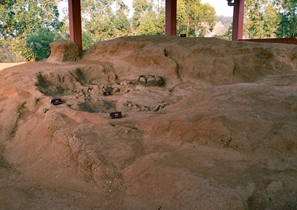
Sites of Cizao Kilns (Jinjiaoyishan Kilns)
The Sites of Cizao Kilns (Jinjiaoyishan Kilns) are outstanding examples of the export-porcelain kiln sites that dotted the outskirts of Quanzhou in the Song-Yuan era.
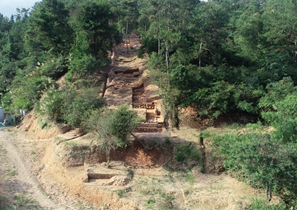
Sites of Dehua Kilns (Weilin-Neiban Kilns and Qudougong Kiln)
The Sites of Dehua Kilns (Weilin-Neiban Kilns and Qudougong Kiln) are an outstanding representative of kiln sites in Quanzhou’s hinterland area that produced porcelain wares for export in the Song-Yuan era.
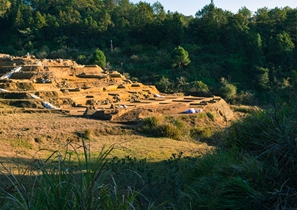
Xiacaopu Iron Production Site of Qingyang Village in Anxi
The Xiaocaopu Iron Production Site of Qingyang Village in Anxi bears an invaluable testimony to the iron production industry in Quanzhou during the Song and Yuan dynasties.
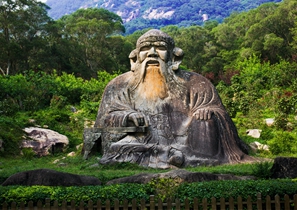
Statue of Lao Tze
The Statue of Lao Tze is a massive stone statue of Lao Tze, founder of Taoism.
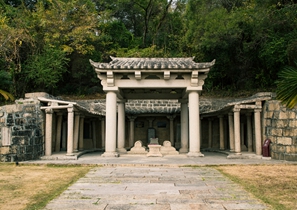
Islamic Tombs
The Islamic Tombs are an important relic of Quanzhou’s Islamic history.
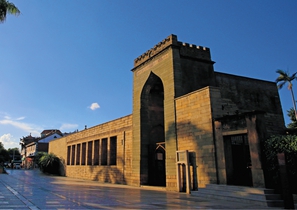
Qingjing Mosque
Qingjing Mosque, an Islamic mosque located in the commercial district of ancient Quanzhou, is rare material evidence that Muslim merchants and their ethnic groups from Persia and Arabic countries traveled to Quanzhou during the Song and Yuan dynasties to engage in commerce.
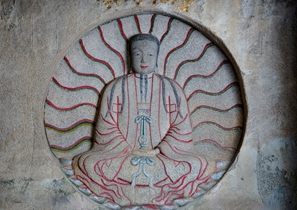
Statue of Mani in Cao’an Temple
The Statue of Mani in Cao’an Temple is a major monument testifying to the dissemination of Manichaeism in Quanzhou during the Song and Yuan dynasties; it displays the extraordinary cultural inclusiveness of Quanzhou as the emporium of world maritime trade.
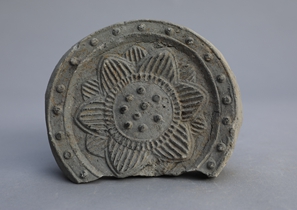
Site of Southern Clan Office
The Southern Clan Office was an administrative agency established for the Song Dynasty kinsmen who relocated to Quanzhou in 1130 and thereafter.
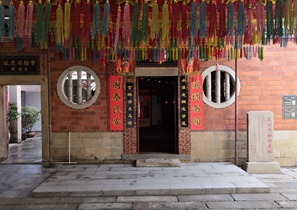
Site of Maritime Trade Office
The Maritime Trade Office in Quanzhou was established in 1087 by the Song and Yuan regimes to manage the city’s maritime trade affairs.
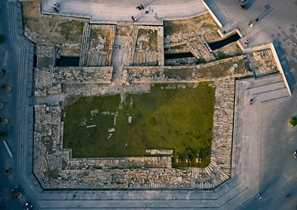
Site of Deji Gate
The Site of Deji Gate holds what remains of the southern gate of Quanzhou in the Song and Yuan dynasties and bears a testimony to the history of the city’s southward expansion.
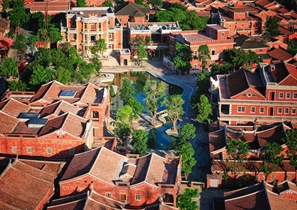
Wudianshi Traditional Block
Wudianshi Traditional Block is located in Qingyan, the old town of Jinjiang City, covering 126 mu (8.4 hectares) and containing 106 buildings.
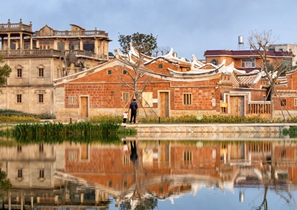
Wulin Traditional Village
Wulin Traditional Village is located in the southwest of Xintang Street of Jinjiang in Quanzhou City, nestled snugly between Shigu Mountain and Wu’an Creek. The village came into existence during the Hongwu reign of the Ming Dynasty, covering an area of about 1000 mu (67 hectares). With a total floor area of 60,000 square meters, the village has a resident population of about 2,100 and is the ancestral home of more than 10,000 overseas Chinese.
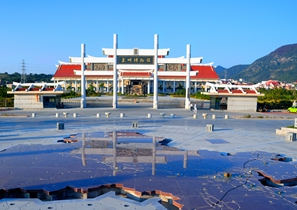
Quanzhou Museum
Founded in January 1985, Quanzhou Museum is located on the north side of West Lake Park at the foot of Qingyuan Mountain in Quanzhou.
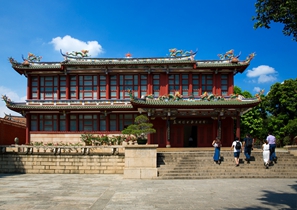
Quanzhou Maritime Museum
Quanzhou Maritime Museum is a Level-I national museum founded in 1959.
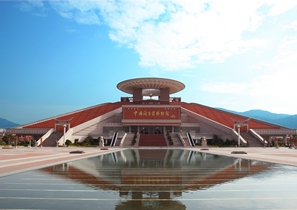
China Museum for Fujian-Taiwan Kinship
China Museum for Fujian-Taiwan Kinship is a Level-I national museum featuring the historical relations between Mainland China (Fujian) and Taiwan.
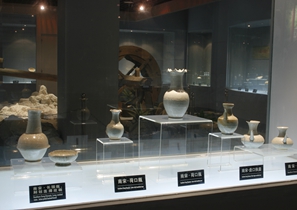
Dehua Ceramics Museum
Dehua Ceramics Museum is the first one of its kind in Fujian Province, boasting a comprehensive collection of ceramic wares.
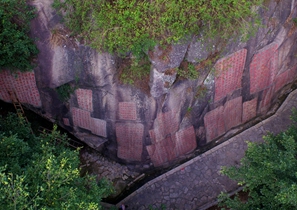
Jiuri Mountain Wind-Praying Inscriptions
The Jiuri Mountain Wind-Praying Inscriptions are cliff-face inscriptions recording the ritual ceremonies held by state commissioners in charge of overseas trade, local officials and members of the imperial clan in the Song Dynasty to pray for propitious winds to aid the overseas trade shipping business.
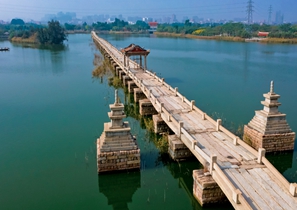
Anping Bridge
Anping Bridge was the node of land transport between Quanzhou and the vast coastal region in southern China, and reflects the way maritime trade spurred on the development of Quanzhou’s water-land transshipment system.
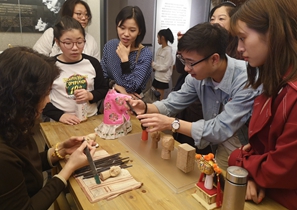
Colorful Intangible Cultural Heritage in the Cultural Capital
Quanzhou boasts rich intangible cultural heritage. The city has five entries on the UNESCO List of Intangible Cultural Heritage: Nanyin, construction techniques of traditional residential buildings in Southern Fujian, puppet show (Quanzhou Marionette and southern-style glove puppets), and watertight-bulkhead technology of Chinese junks, and wangchuan ceremony.
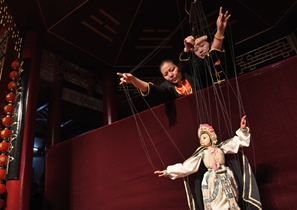
Quanzhou Marionette
Marionette, historically known as “string puppet”, originated from the Qin and Han dynasties and spread to Fujian with the southward migration of the gentry in the Central Plains during the Jin and Tang dynasties.
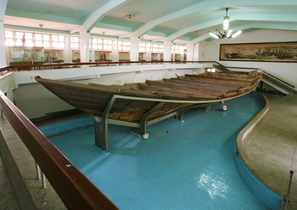
Watertight-bulkhead Technology of Chinese Junks
Quanzhou was the “Number One Port of the East” during the Song-Yuan period. Its highly developed shipbuilding industry was characterized by Fuchuan (literally “Fujian junks”), a classic model of ships.
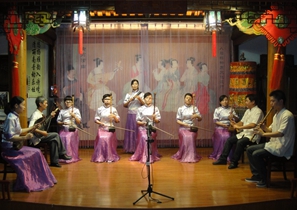
Nanyin Performance Hall in Confucius Temple and School
Nanyin, originally known as “stringed pipe music”, is one of the oldest surviving musical genres in China.